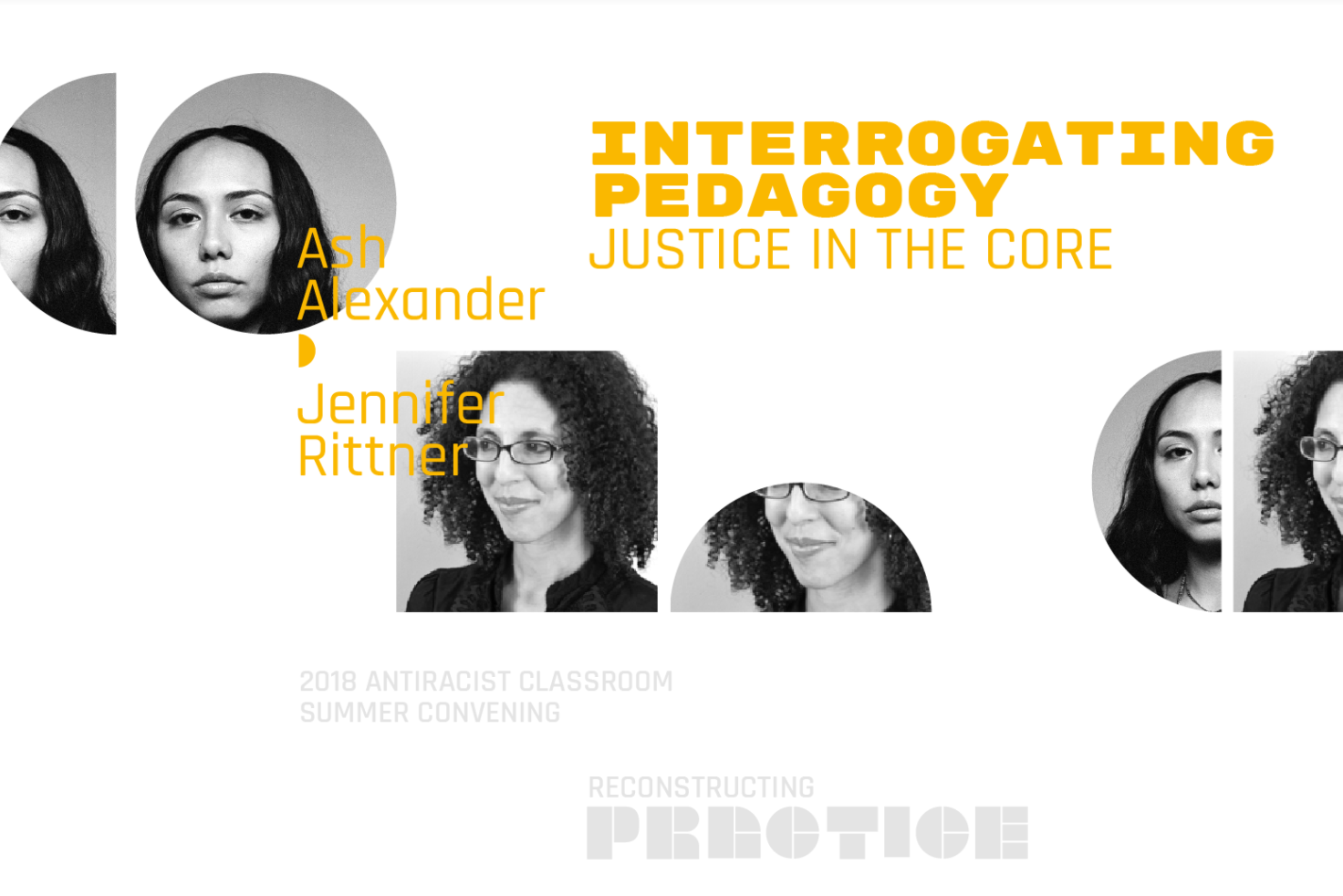We are continuing our ongoing series highlights artists, facilitators and participants in The Antiracist Classroom’s upcoming convening Reconstructing Practice. How do curricula reinforce or disrupt white supremacy? How might art and design practices themselves be an avenue for critiquing art and design syllabi? How can we collectively define what we expect design education to do and be?
On Friday, July 13, Jennifer Rittner—faculty at the School of Visual Arts—and Ash Alexander—ArtCenter photography student and artist, will come together to explore these questions through critiques of syllabi from two different vantage points.
Ash, an undergraduate photo student at ArtCenter, will share redesigned syllabi for two of her art history courses in an installation called “DIVERSITY THE CURRICULUM.” The art history syllabi Ash has encountered ArtCenter have been populated with readings and references of overwhelmingly white artists. “It sends the message that only white artists and voices matter, and that these are the only artists who made an impression on the world. Yet, our classrooms do not look like our syllabi; we have a diverse student body and students deserve to see themselves reflected in the curriculum…Students deserve a curriculum that is more true to the actual history of art, which is not one-sided, linear, or specific to white people/europeans.” Her installation deconstructs those syllabi and reimagines them with readings and visual resources created by non-white artists and scholars.
The pairing of a faculty person and a current student in this session represents an important positioning that upsets the typical hierarchy of a classroom: as Jennifer noted, “there’s not a hierarchy of knowledge here. I have an expertise…but students are also responsible for understanding the things they want us to facilitate. Faculty aren’t just givers of knowledge.” Rittner was brought in as faculty at the School of Visual Arts in New York to teach design history, which she does by bringing in voices that are overlooked in design, exploring the actual design of race itself, and examining the systems of power around it.
Rather than grappling with these in isolation, Ash and Jennifer invite you—fellow students, faculty, artists, and designers—to interrogate the systems of education in which we study and teach; throw aside any hesitations about questioning the existing power structure; and coauthor syllabi in ways that force the curricula to evolve. As Jennifer said: “We [in design education] have been willing to make changes about [adopting new] technology, which is a radical shift. We should also be willing to interrogate what it means to bring different voices into this conversation.”
Want more? Join us July 13 and 14 for Reconstructing Practice in Pasadena, CA. Visit our website for the program and to see which artists, technologists, and designers will be installing work.
